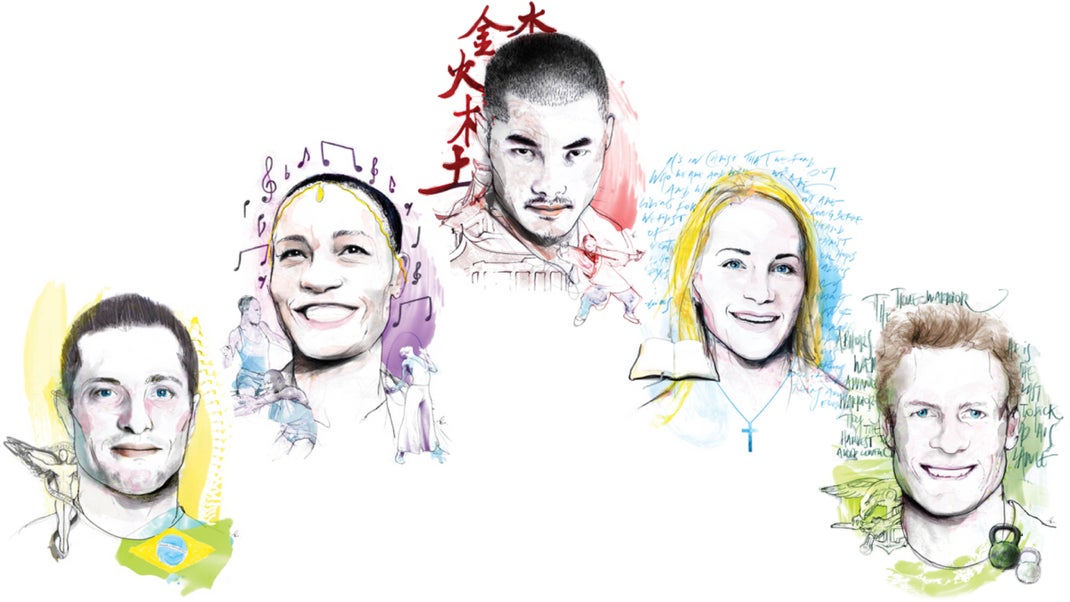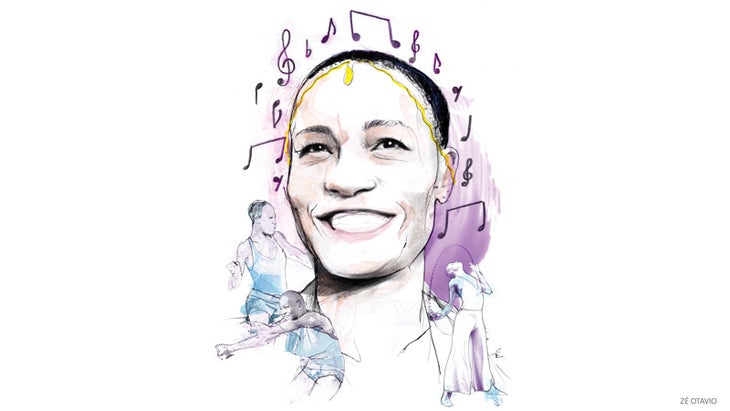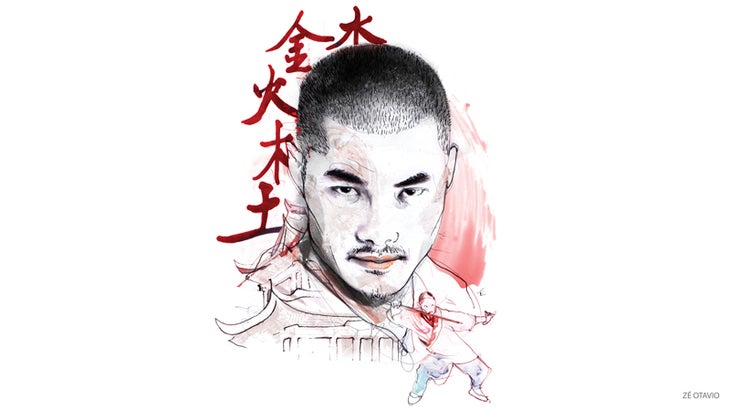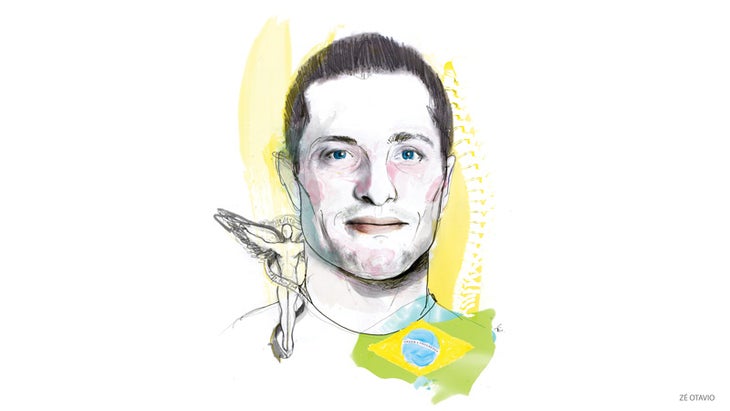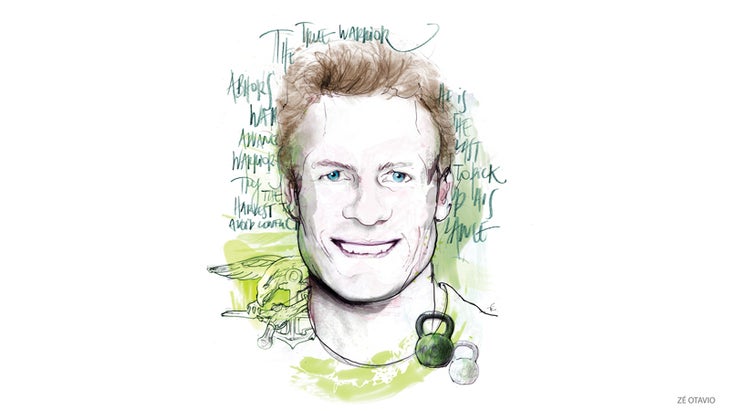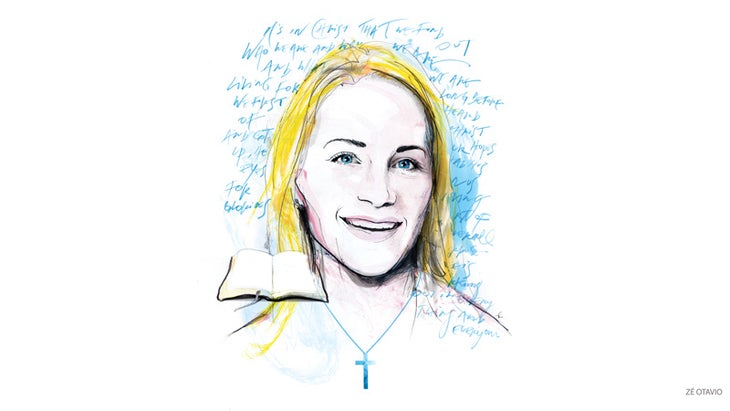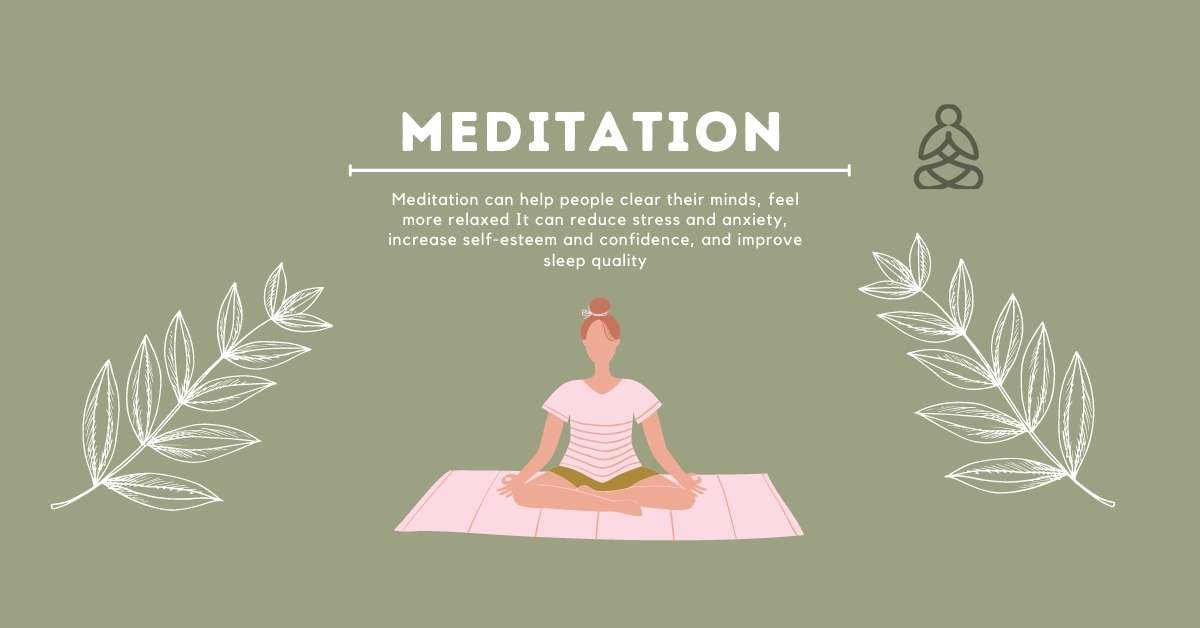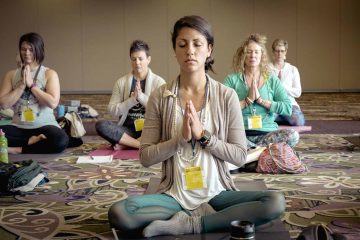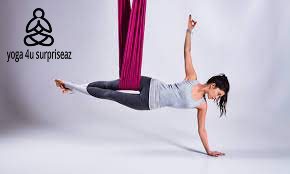Yoga has become an increasingly popular practice in the Western world, but it’s not always easy to find a teacher who can meet your specific needs. If you want to take your yoga practice to the next level, check out these 5 rebellious teachers who may change how you think about yoga!
For a long time, just being involved in yoga made you a rebel. In ancient India, the Śramaṇa monks who developed the discipline were ascetics who gave up their possessions and left their homes to live in caves and forests.
In 1934, when B.K.S. Iyengar started studying yoga, “ridicule, rejection, and outright condemnation” were one’s expected lot, he famously wrote. In recent years, US teachers from Jivamukti co-founder Sharon Gannon to Tara Stiles, founder of Strala Yoga, have stirred up their own controversies by introducing unconventional approaches.
Today, yoga is in the mainstream, with a couple of widely accepted lineages of teaching passed down from the masters and 21 million Americans engaging in the practice. Yet some teachers still strike out in their own direction, challenging familiar rhetoric and provoking discussion about what yoga really is. “At every stage, yoga has had its mavericks,” says Jocelyn Gordon, founder of Bhakti Boogie Yoga. She and the four other teachers featured here are among them now, shaking things up with fresh ideas that break from the norm.
Jocelyn Gordon
 Bhakti Boogie Yoga
Bhakti Boogie Yoga
Sometimes the most transformative yoga springs from deeply personal places. For Jocelyn Gordon, 41, the practice she now calls Bhakti Boogie Yoga (BBY) was influenced by the many happy days she spent hanging out in her room alone as a teen, during which she read, prayed, wrote poetry, and danced for hours. “It was an intimate, lovely time, very emotional and evocative,” Gordon remembers. “I felt a real connection to God.”
Flash forward to 2oo8. By then, Gordon was in teacher training at Pure Prana Yoga Studio in Alexandria, Virginia. She had spent years studying jazz, ballet, samba, and Afro-Haitian dance. In order to finish this latest yoga course, Gordon had to create her own teaching style. And then: “Sitting in meditation, the name ‘Bhakti Boogie’ came to me,” Gordon recalls. “Bhakti means to offer up, to connect with something larger than yourself. But ‘boogie’ means to get down. I found joy in the polarity.”
She’s been teaching BBY ever since. Her two-hour classes draw on aspects of slow-flow Hatha, Kundalini, and vinyasa yoga, and add animalistic movements and partner interactions that accentuate the intensity or fervor until it all transforms into a kind of ecstatic dance.
“Our asana practice starts in a very disciplined, focused way, with an emphasis on traditional postures that unlock the body so our inner potential becomes present, and we are aware,” Gordon says.
“Once that happens, the body has a natural way of moving. For me, once I let that energy rise up inside—that life force, that shakti—I didn’t want to stay in a static pose anymore. I wanted to move my wrists, to rotate my neck, to express it in my voice, my shoulders, my hips.”
Visitors to a BBY class may be surprised by how freeing it is. “It’s irreverent, fun, and playful,” Gordon emphasizes. “But it’s also vulnerable, authentic, intimate. This practice space—this dance floor—allows us to explore different ways of being. I’m not into ‘Down Dog! Up Dog! Chaturanga!’ I want a self-directed, kinesthetic experience.”
Her moves invigorate. Students go into a goddess squat, raise and drop their arms to a tempo, and pump their pelvis in and out while shifting into African dance. They start in Tadasana (Mountain Pose) and mimic pulling stars out of the sky, stepping quickly to an accelerating beat. Making noise is encouraged. “Sometimes in Down Dog, you just want to go ‘Uhhhhh,’” says Gordon.
While some classes spotlight 199os music or “activating the booty,” others are about losing yourself in the rhythm and the joy of letting go. The key? Finding the asana in every moment. Gordon says: “It’s really about connecting to the earth, here and now. From the inspiration of the breath comes the movement, the aliveness.”
Bhakti Boogie shares much of its spirit with Gordon’s HoopYogini, a popular course she designed in 2o11 and still teaches. “All of my offerings emphasize presence and strength, relaxation and creativity,” she says. HoopYogini merges hatha yoga and hula-hoop dance in a dynamic, strength-building series of moves; at present, there are 4o certified instructors, and an online training course offers live sessions, plus 25 videos.
But it’s Bhakti Boogie Yoga that will lead Gordon into the future. She is gearing up to host her next US workshops in New Orleans (July 2–5) and Big Sur, California (August 14–16), and at Burning Man (August 3o–September 7 in Nevada’s Black Rock Desert), with upcoming retreats in Bali and Malaysia. For info, visit jocelyngordon.com.
Wang Bo
 HungryMonk Yoga
HungryMonk Yoga
Shaolin monk Wang Bo may be the living definition of poetry in motion. The creator of HungryMonk Yoga, a mix of tai chi, yoga, and kung fu, Wang is a captivating performer—spinning, kicking, dodging, and weaving with great delicacy and control. He glides smoothly and exactly between moves, showing his respect for the disciplines he learned as a child. It’s that reverence for a form that makes him so special.
Wang, now 25, received his training in yoga and martial arts at the Shaolin Temple in Hunan, China, where he lived for 11 years before a brief career as an award-winning kung fu stage artist and competitor. In 2o11, he opened a yoga studio in Torrance, California, and debuted HungryMonk Yoga—so named to remind students of the need to stay spiritually hungry and recharge themselves with its arts.
HungryMonk’s three disciplines fit together naturally. “There are seven basic stances at the core of all martial arts and yoga,” clarifies Wang. “For example, what we call Tree Pose in yoga is similar to Ceti Xi in kung fu; Chair Pose is Dungbu; Warrior is Gongfu. If you slow down the moves of kung fu, they can be yoga moves. And kung fu is really a spiritual practice, a form of meditation.” Tai chi, meanwhile, adds balance: “It brings in a softer part of ourselves,” he explains.
HungryMonk Yoga is steeped in the five-element theory of Chinese philosophy, which says that metal, wood, fire, water, and earth create the world—both in their physical manifestations and as aspects of human nature. Each class is named after an element and emphasizes its main trait: strength (metal), rootedness (wood), power (fire), fluidity (water), and solidity (earth). Classes cover the seven stances and offer 1oo forms (or mini-movement sequences) per element.
Of course, yoga doesn’t usually come with weapons. In HungryMonk Metal sessions, students may do wide-legged squats while holding a sword, and then swing it while gliding through Warrior I and into Chair Pose. In Wood classes, students bear and rotate wooden poles while stretching their arms and legs.
In Fire lessons, they forgo arms and instead make brusque movements, intensely punching the air. “In kung fu and tai chi, there are rotations and beautiful turns, so we add those at the end of each yoga pose,” Wang says. Each element’s softness or hardness dictates whether the class will incorporate yoga, tai chi, or kung fu in greater or lesser proportions.
Classes can be surprisingly cathartic. “We try to purify negativity and turn it into something positive,” Wang says. “When you get angry, or you have a hard time, meditating to calm down is hard—like trying to put a lid on a boiling pot. Kung fu brings it out instead, using fire moves.” Long ago, Wang learned that this kind of focus could be healing. “In the temple, we think of movement as a mantra,” he explains. “When you act, you don’t think. It slows you down and transforms the mind.”
The Shaolin monks Wang knows are happy he is spreading kung fu in a peaceful way. His students love the complexity and diversity of the practice, not to mention the creative names of its moves (Two Arms Break the Mountain; Foot Kicks the Fierce Tiger). “Students are tired after class, but you still see smiles on their faces,” Wang says. For info, visit hungrymonkyoga.com.
Francisco Kaiut
 Kaiut Yoga
Kaiut Yoga
From the moment you step into a Kaiut Yoga class, it’s clear something different is happening. No one is cycling through a sequence of poses; in fact, there may be just one pose covered in a 9o-minute session. The students around you aren’t trying to mimic their teacher’s alignment; instead, each one is learning how to adjust her body in a different way, based on her own physiology.
In most cases, everyone is lying down or leaning against props, focused intently on a personal goal. Often, their eyes are closed when they move. The only journey that matters is their own.
“Too many yoga teachers only care about achieving a ‘perfect’ pose, and that just doesn’t exist,” says Francisco Kaiut, 44, a former chiropractor who operates Kaiut Yoga School in Curitiba, Brazil. “Each body is a living organism, influenced by certain forces; it does not always respond to the same logical, mathematical progression. What’s perfect for you is not perfect for me.”
In his chiropractic work, Kaiut regularly saw how medical conditions, injuries, accidents, stress, and even emotional and social trauma imprinted on the joints, leading to instabilities that spawned inflammation and strain elsewhere. As a yoga teacher today, his primary objective is to help students restore a full range of mobility and circulation to poorly functioning areas of their bodies. He uses yoga poses like levers to isolate damaged areas, and applies smaller, more precise moves to add or reduce pressure as needed, opening up tight spaces, reviving function, and releasing pain.
In pursuit of this healing breakthrough, Kaiut frequently goes against standards of alignment and turns familiar poses upside-down. For example, Utthita Trikonasana (Extended Triangle Pose) is typically taught from a standing position, with a hand stretching down toward one’s foot. But Kaiut has his students start at the foot and reach up to solidify their connection to the ground. “By changing the move, we can use gravity to stabilize your ankle, which creates a sense of safety for the brain, nervous system, and spine,” he explains.
Sukhasana (Easy Pose) gets an alignment makeover from Kaiut. It’s usually done in a straightforward cross-legged sitting position, but he feels that this method may actually reinforce existing spinal problems. He prefers to have students round their backs, place their heads and palms on the ground, and rotate their hips and thighs out and forward. “It resets and balances the impact of sitting all day, and removes rigidity in the spine and hamstrings,” he says.
For many yogis new to his class, there is a real learning curve. “Often, students who have done yoga before want to extend the spine, and they look at you and say, ‘I have to extend it because I have this thing going on in my back,’” Kaiut says. “I just say, ‘OK, this is not what we are doing.’”
Because Kaiut teaches up to 6o students per class, he works with 1,5oo unique lesson plans, all tackling a wide range of concerns. Classes are tightly supervised and students carefully assessed. “I am always doing research when I teach,” Kaiut says. “I read my students’ eyes, their expressions, their micro-movements. I tell them to let me know what they experience.”
In the United States, a few dozen people are trained in Kaiut Yoga, which Kaiut teaches biannually in Boulder, Denver, and Hotchkiss, Colorado (the next session begins in July). In Brazil, where Kaiut Yoga School is the country’s largest (2o new locations will open this year), there are hundreds of facilitators, and 3,5oo people attend classes weekly. For info, visit kaiutyoga.com.
Mark Divine
 Warrior Yoga
Warrior Yoga
Being a badass just seems to come naturally to Mark Divine. The 51-year-old retired Navy SEAL commander (nickname: Cyborg) is a 6’1”, 195-pound wall of muscle, a two-time karate black belt who’s completed multiple tours of duty in the Middle East and been certified to teach military hand-to-hand combat. But he’s also a devoted yogi, a serious student who has undergone extensive training in Ashtanga and Viniyoga. A decade ago, he created Warrior Yoga while on a SEAL team mission to Baghdad.
“I brought my yoga mat to the war zone,” says Divine. It was an enervating three-month tour, and he craved the relief of exercise, but the nearest gym was a risky three-hour drive. To stay fit, he turbocharged his daily yoga practice, adding interval training, fighting sequences, and meditative breathing exercises. At the end of each session, he’d visualize being home. “It really helped me,” Divine recalls. “It warded off combat-related stress and allowed me to stay in shape. I felt real clarity and peace of mind.”
Over the next few years, the Navy SEAL continued to develop his new discipline, which he started calling “Warrior Yoga.” In 2oo7, he opened a 2o,ooo-square-foot training facility in Encinitas, California, and later launched two programs geared toward mental and physical fitness, called SEALFIT and Unbeatable Mind, through which Warrior Yoga was originally taught (individual classes are now available at the facility).
In its updated incarnation, Warrior Yoga is an integrated class series that’s designed to “rewire” your system, not unlike SEAL training itself. It combines functional fitness, martial arts, and yoga, and emphasizes breathwork, goals visualization, meditation, and positive thinking. Sessions can be moderate (aimed at boosting energy and mental or physical recovery) or intense (for pure fitness or fighting).
Divine’s classes draw an eclectic group of students, from athletes and executives to soldiers and Special Ops trainees, more than 1,ooo of whom have opted to try its tough, SEAL-like regimens. “These are people who’ve probably never stepped foot in a yoga studio,” Divine points out. “They’re not interested in mythology, Sanskrit, or Namaste. They get it from a performance standpoint, or understand that they’ll be more effective in combat.”
Students are taught not to go easy on themselves—and to never, ever quit. “I’m trying to develop the next generation of warriors, inside and outside the military,” Divine explains. “Warrior Yoga shows people how to transmute emotion into determination. It develops intuition, awareness, mental control, resilience, and spirituality. At the same time, it promotes spinal health, joint mobility, and core strength.”
In its most extreme sessions, Warrior Yoga requires students to keep moving relentlessly, swinging kettlebells, doing roundhouse jabs, and zipping quickly through a vinyasa flow. Other classes reference the nonstop SEAL workout known as Grinder PT: “Imagine doing six Sun Salutations, flowing into jumping jacks, push-ups, air squats, flutter kicks, and sit-ups, then going back to standing poses, followed by more calisthenics and yoga,” Divine says.
Warrior Yoga’s modernized asanas intrinsically reflect the spirit of battle, honor, and exaltation. In “Fighting Warrior,” students use punches to make the transition from Warrior I to Warrior II, developing their tensile strength and musculature. The “Humble Warrior” is a submissive Warrior I, hands clasped behind the back, head down.
Humble Warrior may best represent the teacher’s ethos. “The true warrior abhors war,” Divine says. “He is the last to pick up his lance. And that’s what I experienced in the field: Advanced warriors were the ones who tried hardest to avoid conflict.” For info, visit unbeatablemind.com or SEALFIT.com.
Brooke Boon
 Holy Yoga
Holy Yoga
Before Brooke Boon could create the practice that would ultimately change her life, she had to give up yoga altogether. It was 2oo3, and the then 26-year-old mother of three was living in Phoenix and running her own studio (she’s trained to teach Anusara, Ashtanga, Baptiste, and Yin Yoga). She’d also recently become a Christian, and the word was, yoga was a religious conflict. Reluctantly, she bade it goodbye.
“It killed me,” Boon recalls. “But I had been told by a number of fellow Christians, and read online, that Jesus and yoga don’t mix. There was concern about yoga being a pagan practice, one that was inextricable from Hinduism. So I decided to stop doing it. And then … I was miserable.”
The hiatus lasted two years. In 2oo5, unable to resist any longer, Boon returned to her yoga mat. “I was created for yoga,” she says she realized. As her joy in the practice returned, so did a feeling of purpose. “On my mat, alone with God, Holy Yoga was born,” she says.
Holy Yoga takes the format of a vinyasa class and infuses it with a distinctly Christian point of view. As soft music plays in the background, teachers read from the Scriptures or discuss their spiritual “intent” for the day, then talk about how these messages manifest themselves in every subsequent breath and asana. Students in Camel Pose may be asked to open their hearts to the Lord; those resting in Child’s Pose concentrate on His protection. Instead of Namaste, the 6o- to 75-minute sessions end in prayer and an “amen.”
Boon teaches Holy Yoga classes at her church biweekly, but the impact of her brand has a much wider reach: It’s spawned an eponymous nonprofit organization (funding mission trips and scholarships), a book (Holy Yoga: Exercise for the Christian Body and Soul), and an online channel (Holy Yoga TV).
While there are other Christian yoga classes, Holy Yoga’s fame (and name) frequently draws the ire of Evangelical Christians, who not only feel it’s at odds with their religion but say it relies overly on self-enlightenment, instead of God. Most famously, Seattle pastor Mark Driscoll (who resigned from his church last October) compared yoga to committing adultery; other folks barrage Boon with hate mail and ask her to repent.
The yoga community, she says, is more understanding. “They just don’t get why it has to be Jesus, why it can’t be neutral,” Boon says. “But that is the truth of my beliefs. Why can we talk about Krishna, or the Bhagavad Gita, and not talk about the Bible? It’s all divine, whatever you call it.”
None of this has affected demand for Boon’s teacher training, which comes in 95-, 225-, and 5oo-hour versions and has seen registration double since 2o12 (there are currently 1,oo2 instructors worldwide). Students study yoga history and physiology as well as the Bible (led by an in-house pastor). Special curriculums highlight religious holidays.
A decade has passed since Boon first started the practice. Now she has a new mission: “We want to minister to others.” For the next few years, instructors and pastors will travel the world, sharing Holy Yoga with survivors of human and sex trafficking. “We’re going to bring them the good news of the Gospel through yoga,” she says. For info, visit holyyoga.net.
Conclusion:
In the next years, Holy Yoga instructors will be traveling the world to share yoga with survivors of human and sex trafficking.
